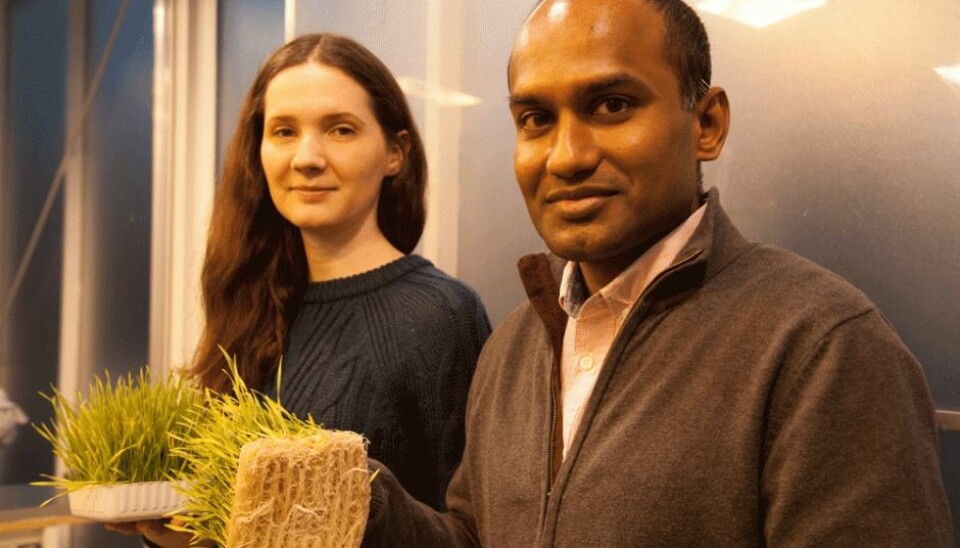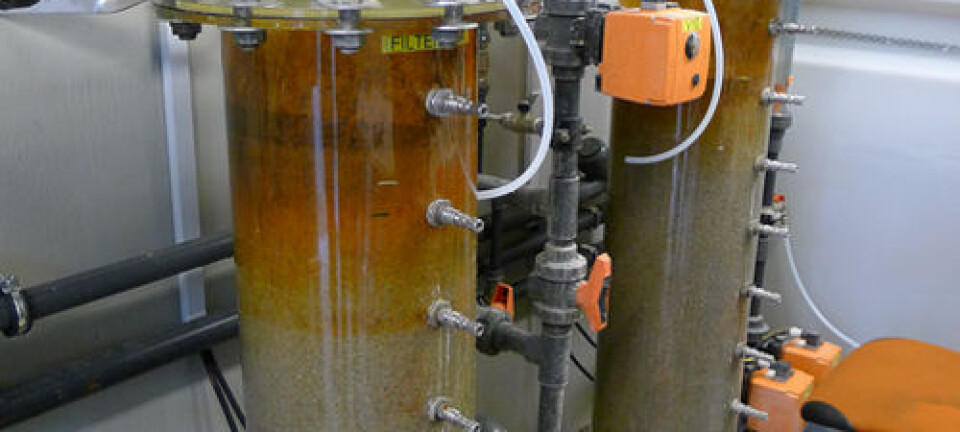An article from Norwegian University of Life Sciences (NMBU)

From aquatic nuisance to terrestrial blessing
Phosphorus is an essential nutrient in all plant production, but phosphorus reserves are now being depleted at an ever quicker rate. This is a threat to food safety.
Denne artikkelen er over ti år gammel og kan inneholde utdatert informasjon.
Phosphorus is required to support an ever-increasing global population. Both plants and animals need phosphorus in order to grow, while humans acquire it through the food we eat.
Most of the phosphorus we eat is excreted through faeces and urine, which is collected in drainage systems and cleansed in purifying facilities before being released into rivers, lakes, and other bodies of water.
Even after purification, a good deal of phosphorus is discharged into such water bodies, something that in turn leads to algae surges and other detrimental effects.
Phosphorus-rich Norwegian soil
Nonetheless, Norwegian soil is often extremely rich in phosphorus, especially in areas where domestic animals have been kept. Norwegian soil is generally acidic, and many other countries in Europe have a more basic soil that is rich in lime. It is rich in iron and aluminium that bind the phosphorus strongly.

This is reinforced when drainage sludge from purification facilities that use iron and aluminium is added to the soil.
At the Norwegian University of Life Sciences - NMBU, hydrologists have worked for several years on finding new sources of phosphorus, studying for example how phosphorus can be extracted from sewage. Sludge stemming from the purification of sewage water contains the phosphorus that researchers want to get hold of.
Municipal purification facilities purify sewage by adding chemicals (aluminium or iron). Phosphorus then bonds with the metals and is secreted as sludge. This sludge, and hence the phosphorus along with it, is then returned to the arable land. Research has shown, however, that the chemical bonds are so strong that the plants are unable to use the phosphorus.
Binding phosphorus with polymers
PhD candidate Lelum Manamperuma studies how to purify drainage water efficiently and with less use of chemicals. According to Manamperuma, using polymers in drainage purification is the way to improve the sludge from the large municipal purification facilities.
“In order to get hold of the vital phosphorus, I have experimented with adding various types of polymers,” Manamperuma explains.
“Polymers ‘seize’ the phosphorus, and can thereby help reduce the use of iron and aluminium. We can thus remove phosphorus from drainage water without hindering the plants from using it.”
Manamperuma has tested various types and amounts of polymers in drainage water from the buildings around Campus Ås, including the student dormitories. Polymers are compounds that are made up of chain-shaped molecules consisting of repetitive structural units. Most polymers are organic, but also inorganic ones exist, such as glass and plastic.
Sewage drudge in Norway contains over three thousand tonnes of phosphorus. Most of this phosphorus is to be found in the municipal facilities for drainage purification. The aim of Manamperuma’s work is to improve the purification facilities and utilize the sludge as much as possible.
Solid plant growth
Drainage water enhanced with various types and amounts of polymers is currently being tested out on corn growing in the greenhouse at the Centre for Plant Research in Controlled Climate (SKP) at NMBU.
Manamperuma is searching for the optimal dose of polymers combined with iron and aluminium. The experiments in the greenhouse are now fourteen days old and are slated to continue for a few more weeks.
“It seems as though we can achieve the same purification rate in the various mixtures that use less iron and aluminium, even as they improve plant growth,” Manamperuma notes.
“It also seems as though the quality of the plants improves when polymers replace iron and aluminium. This is promising in regard to being able to return phosphorus from purification sludge in a more efficient way.”
A scarcity
Manamperuma’s supervisor, Associate Professor Arve Heistad, is optimistic about utilizing drainage water more efficiently. Every year, the agriculture sector in Norway uses eight thousand tonnes of phosphorus in the form of artificial fertilizers.
90 percent of the remaining phosphorus that is used in artificial fertilizers in the world is controlled by only five countries, and in food production there is no substitute for phosphorus.
“Limited access to artificial fertilizers and the need for a more efficient plant production will increase competition for these resources in the future,” Heistad warns.
“Recovering phosphorus more efficiently from drainage water and returning it to arable land is therefore a vital contribution to avoiding a future food crisis.”

































